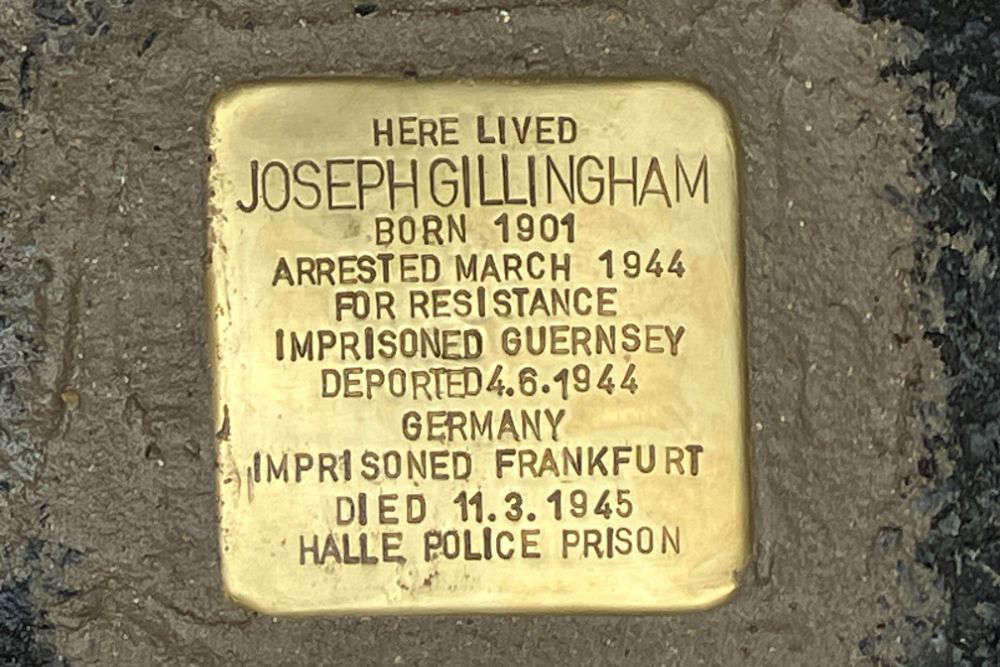
The daughter of Joseph Gillingham. Who died in a Nazi prison in March 1945, witnessed a memorial stone to her brave father laid outside their old family home.
A small crowd gathered in the Bordage, St Peter Port, to witness the first Stolpersteine, or stumble stone, laid just after 9am on 26 July.
A hole in the tarmac outside number 42, the Bordage, was pre-drilled and artist Gunter Demnig took out the plug, scrapped away the gravel and put the stumble stone in place.
It is a square concrete base with a brass engraved plaque on top, outlining the name and brief occupation history and key dates of the person who died. Gunter came up with the idea in 1992 and thousands have been laid. He says there remain countless victims of Nazism who need to be remembered in this way, throughout Europe.
Gunter carefully filled the hole with concrete and stabilised the stone in its new resting place.
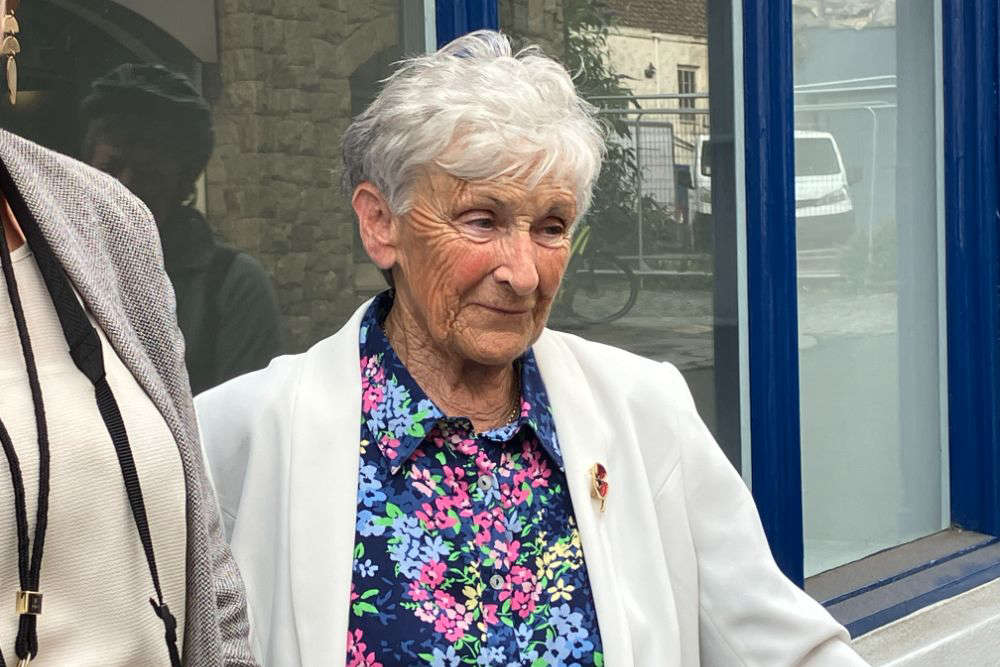
Jean Gillingham, Joseph's daughter, at the laying of the Stolpersteine in memory of her father
Joseph Gillingham was one of eight, known as GUNS, or the Guernsey Underground News Service.
They distributed news pamphlets transcribed from BBC broadcasts to islanders whose only idea of how the war was going was Nazi propaganda.
They were informed upon in 1944 and sent to a German prison. Jospeh died of brutality just two months before the war ended. He was buried, but it took until 2016 for historians to find his grave. Amanda Hibbs is his grand daughter:
"It's been an emotional roller coaster, but it's fantastic that we're getting some closure and recognition for him, for what happened."
Helen Glencross from Guernsey Museums is co-ordinating the project:
"People will walk past and take notice of these stones, they're absolutely beautiful. They tell a story about each person. Who they were, where they were deported to, and ultimately, their fate as well."
14 more will be placed throughout the day, to 11 who died at German hands, and three who survived.


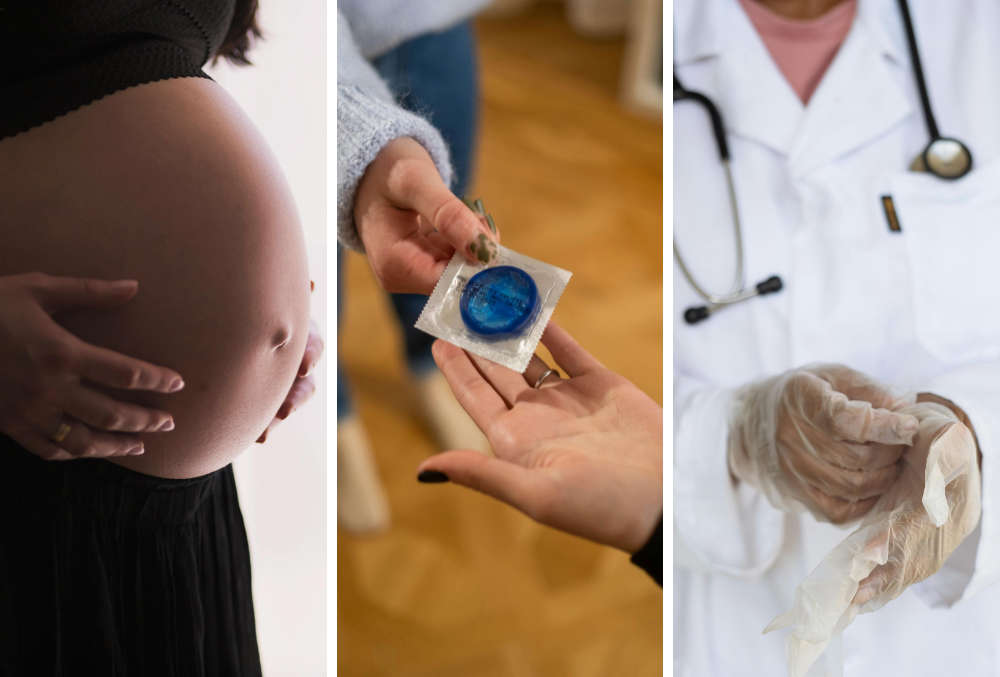 Guernsey's Sexual Health Strategy 'refreshed'
Guernsey's Sexual Health Strategy 'refreshed'
 10 days left to register to vote in Guernsey's 2025 General Election
10 days left to register to vote in Guernsey's 2025 General Election
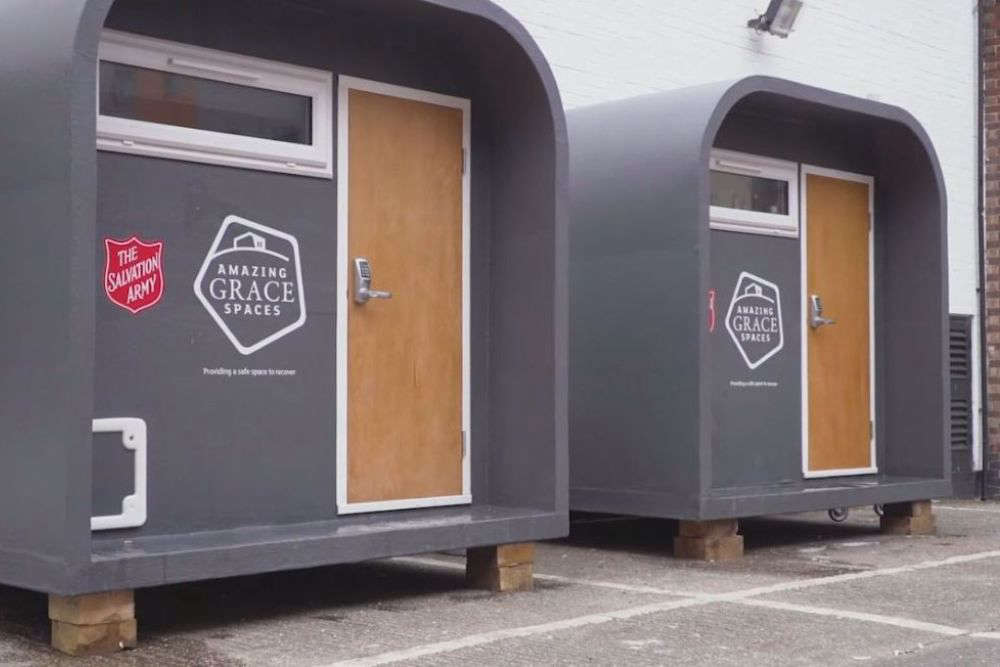 Emergency sleeper pods to help homeless in Guernsey
Emergency sleeper pods to help homeless in Guernsey
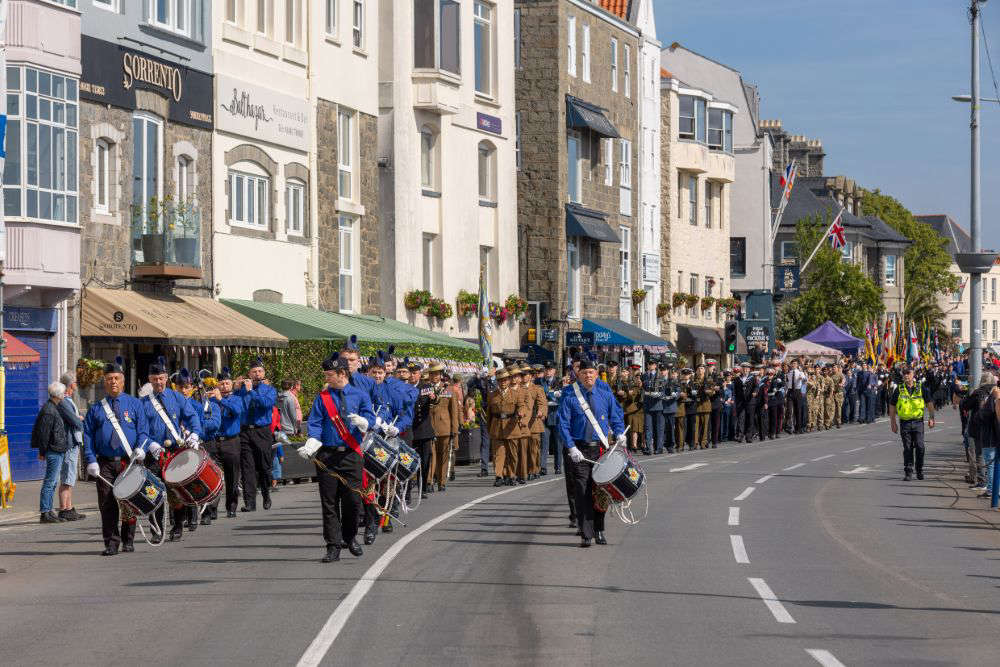 100 visiting military personnel will join Guernsey's 80th Liberation Day Parade
100 visiting military personnel will join Guernsey's 80th Liberation Day Parade
 New construction charity helps the Guernsey Counselling Service
New construction charity helps the Guernsey Counselling Service
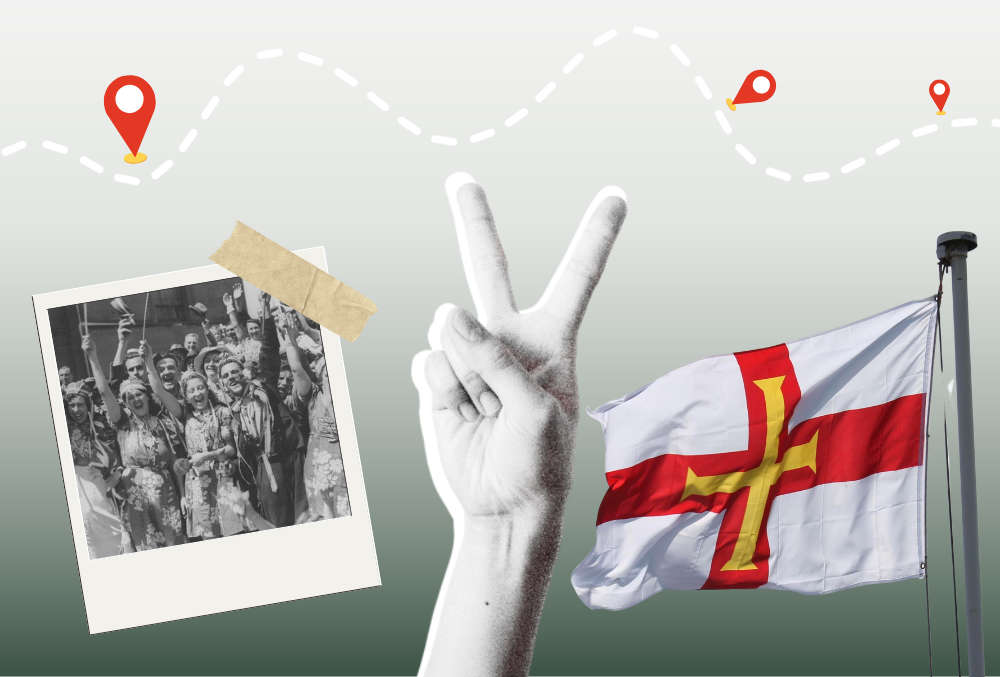 Guernsey Liberation Trail unveiled
Guernsey Liberation Trail unveiled
 Millions of Bailiwick of Guernsey historical records digitised
Millions of Bailiwick of Guernsey historical records digitised
 New Channel Islands catamaran tests well in choppy seas
New Channel Islands catamaran tests well in choppy seas




